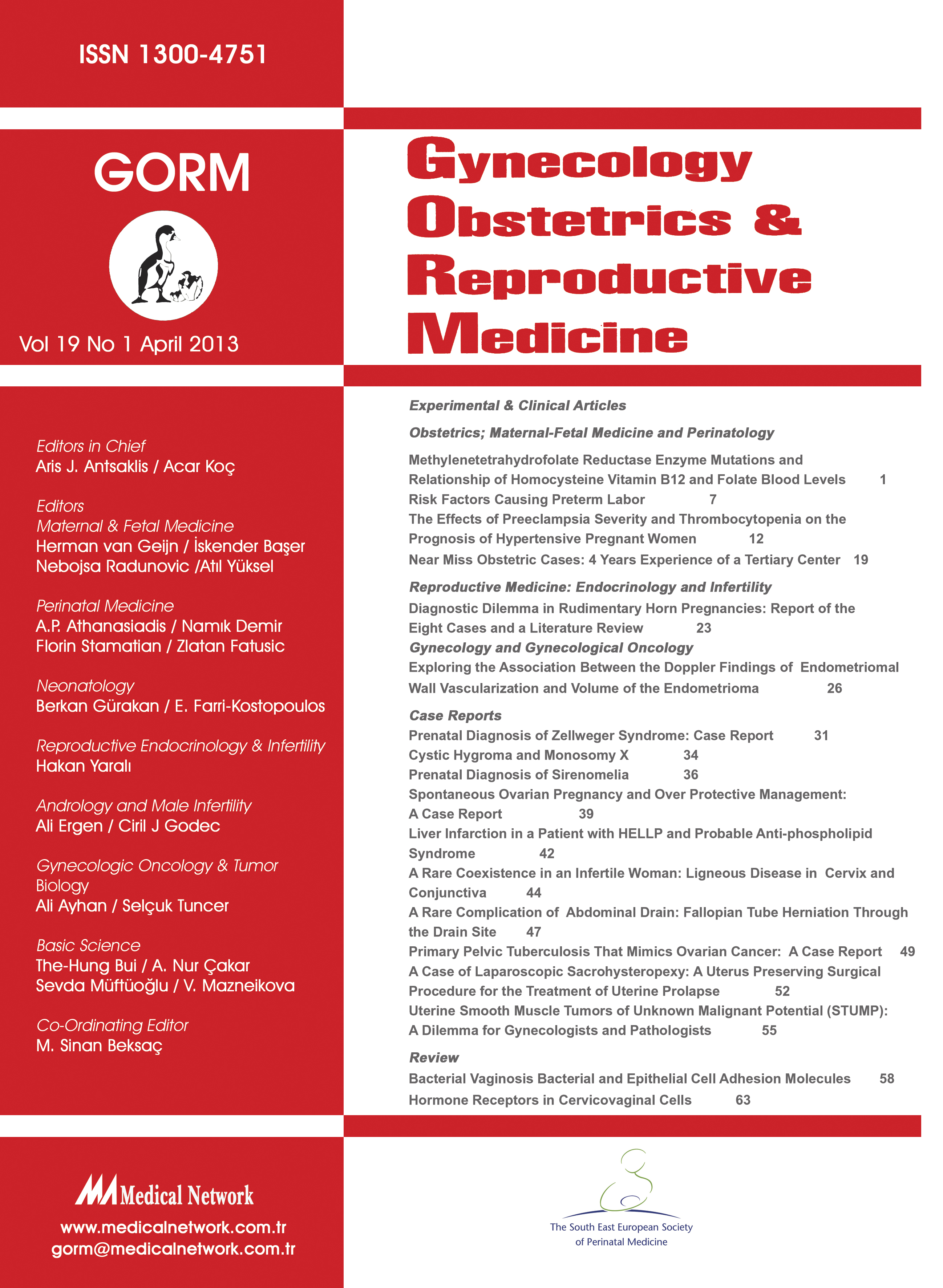Bacterial Vaginosis Bacterial and Epithelial Cell Adhesion Molecules
Keywords:
Bacterial vaginosis, Clue cell, Cadherin, Pili, BiofilmAbstract
Lactobacilli are member of normal vaginal flora. They maintain low pH of vaginal discharge by metabolising glycogen in vaginal epithelial cell and protects the vagina against the pathogenic microorganisms. However, the vaginal flora can be changed because of birth, taking antibiotics and contraceptive pills. Thus, whereas Lactobacilli population decreases, Gardnerella vaginalis and mixed anaerobic bacteria population increase and this situation causes an infection named Bacterial vaginosis. In this infection, the main diagnostic criteria are clue cells. The clue cell is a squamous epithelial cell which is covered by bacteria. First step of infection progress is adhesion of bacteria to epithelial cell through the adhesion
molecules. The most important adhesion molecules of epithelium are cadherins, fibronectins, Toll like receptors and carbohydrates. In bacteria, pilis, lypopolysaccaharide and biofilm have primary importance. In this review, the adhesion molecules are discussed in detail and their roles in formation of clue cell are clarified.
Downloads
Downloads
Published
How to Cite
Issue
Section
License
Copyright (c) 2013 Şayeste Demirezen, Aydan Mutlu, Sinan Beksaç

This work is licensed under a Creative Commons Attribution 4.0 International License.
All the articles published in GORM are licensed with "Creative Commons Attribution 4.0 License (CC BY 4.0)". This license entitles all parties to copy, share and redistribute all the articles, data sets, figures and supplementary files published in this journal in data mining, search engines, web sites, blogs and other digital platforms under the condition of providing references.





